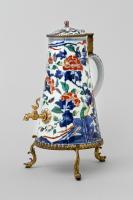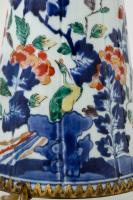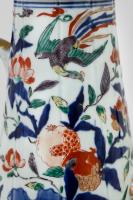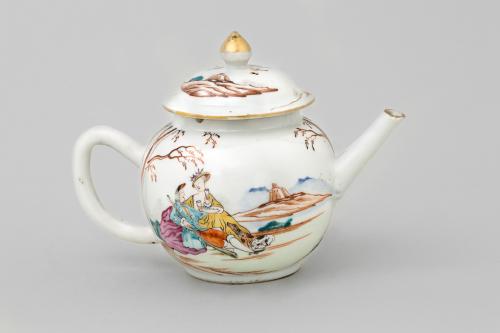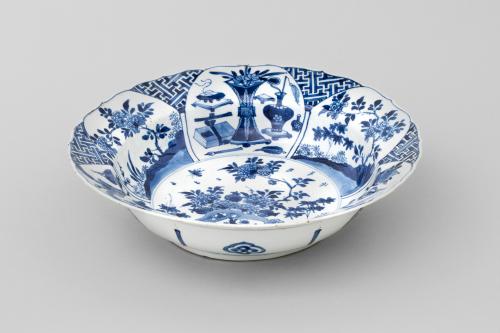
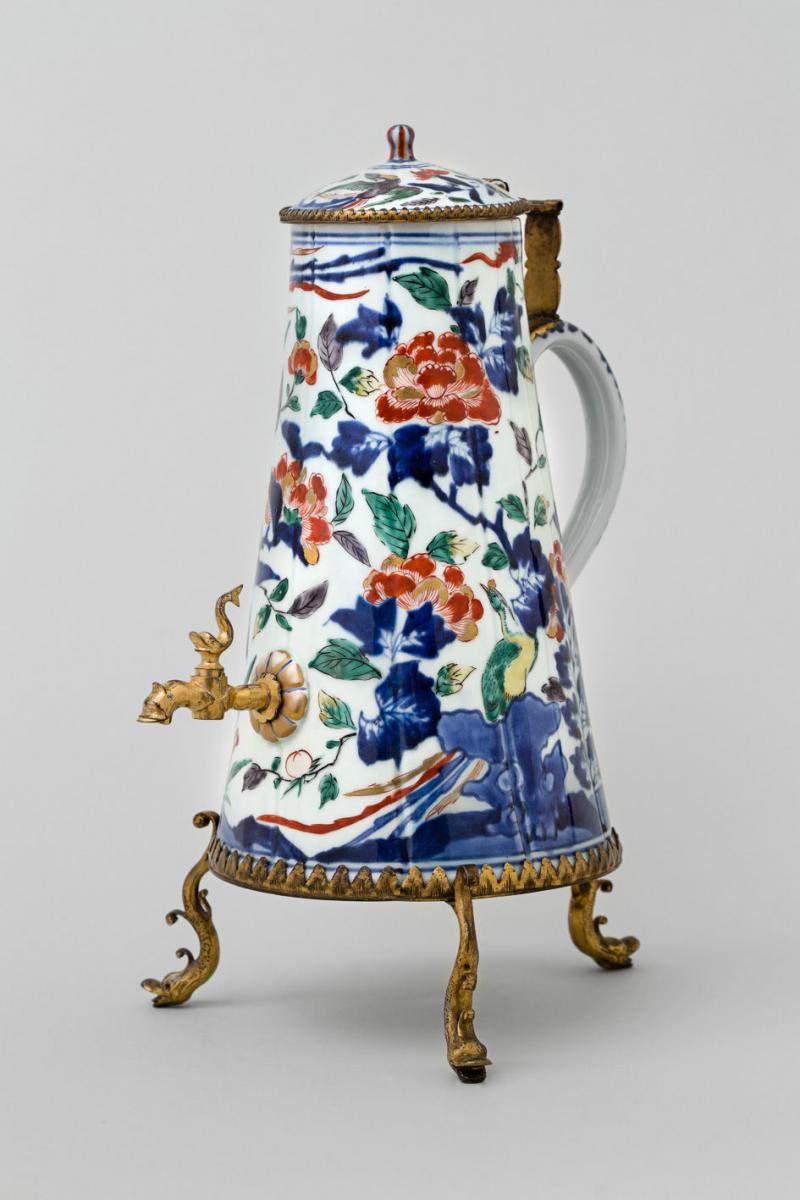
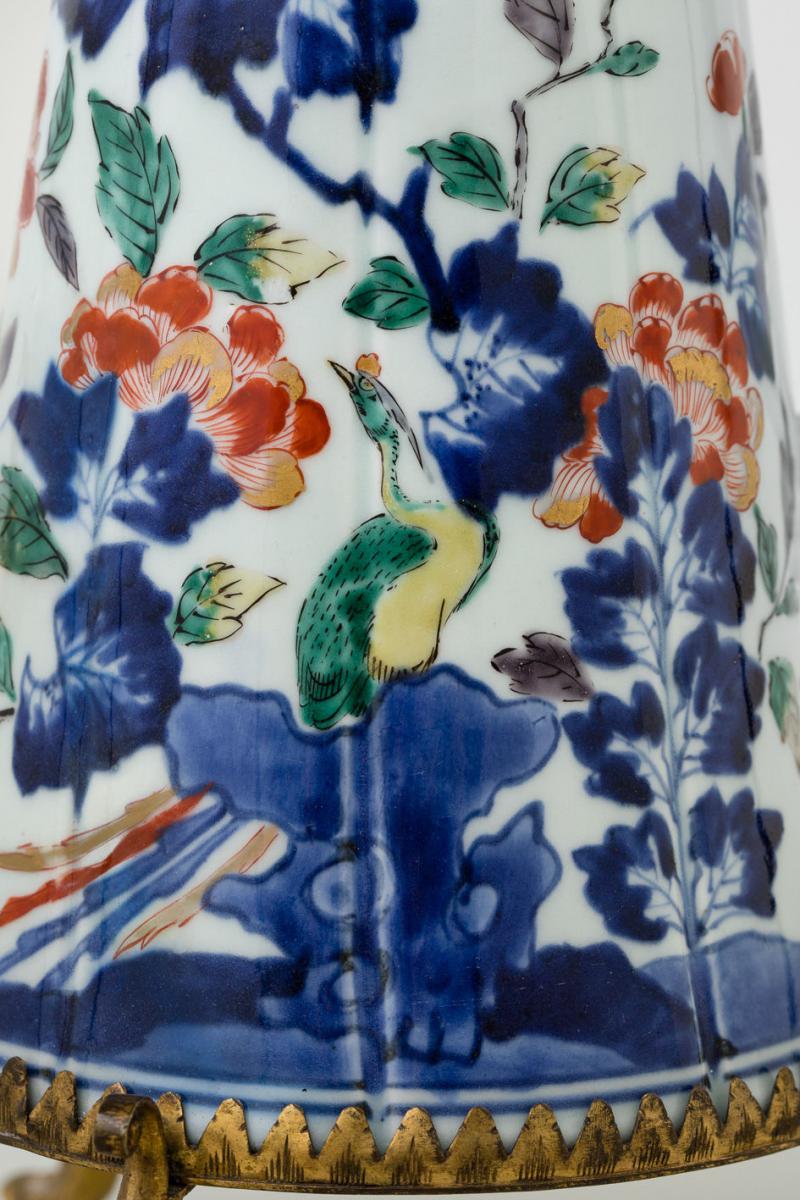
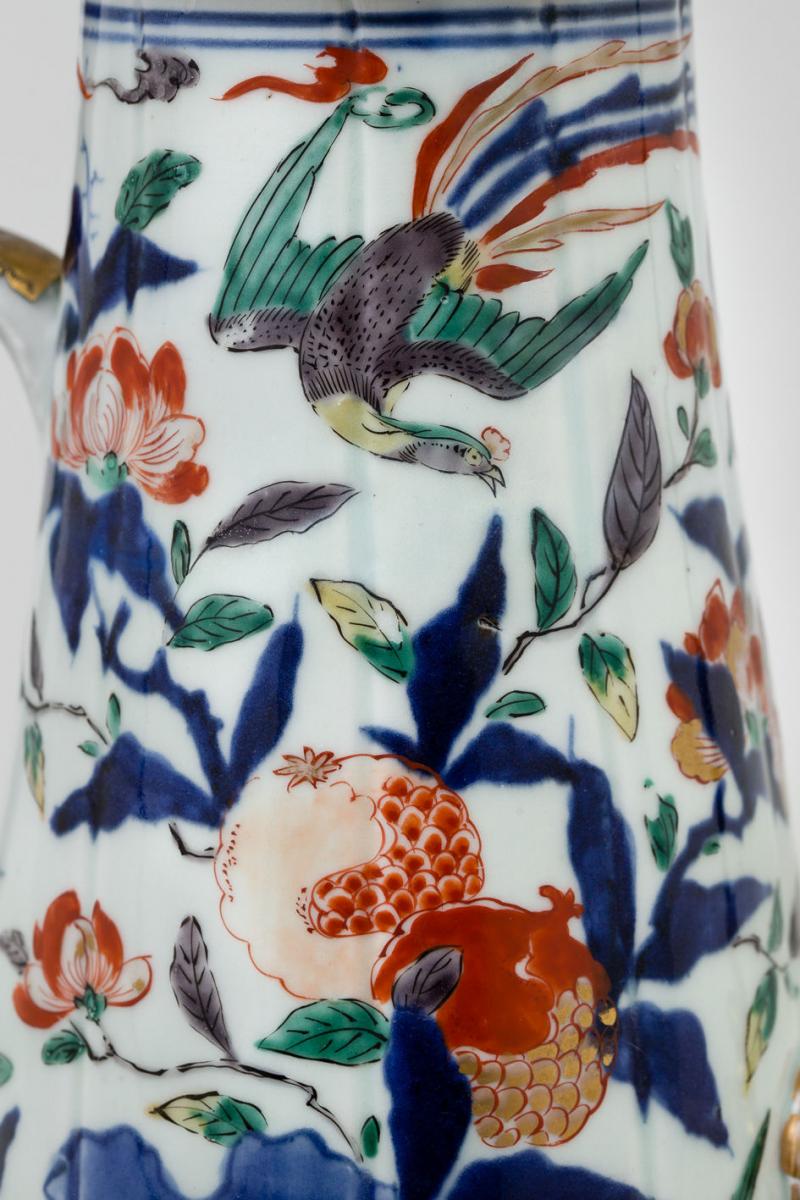
Price on application
This object is eligible for a Certificate of BADA Provenance
The BADA Standard
- Since 1918, BADA has been the leading association for the antiques and fine art trade
- Members are elected for their knowledge, integrity and quality of stock
- Our clients are protected by BADA’s code of conduct
- Our dealers’ membership is reviewed and renewed annually
- Bada.org is a non-profit site: clients deal directly with members and they pay no hidden fees
Of conical form with eight vertical ridges along the tapering sides, a C-shaped handle and later bronze mounts, raised on three high slender feet in the shape of bird heads with a band of bronze triangle-work around the base; the body decorated in underglaze blue and colourful overglaze enamels and gilding, with phoenixes and peony blooms, among stylized rockwork and floral sprays; set with a bronze spout surmounted by a fish, the lid similarly decorated, with peony blooms and a pomegranate, the base glazed.
Period: Second half of 17th century
Footnote: See the Peabody Essex Museum for an almost identical coffee pot, including enamelled decoration, accession number E82003. Referring to a pot of this form, Christaan Jorg notes that there ‘seem to be no enameled examples’, suggesting that the present pot and the example at the Peabody Essex museum are rare exceptions to this rule (Jorg ‘Chinese Ceramics in the Collection of the Rijksmuseum, Amsterdam’, 1997, p. 275).
The Ashmolean Museum, Oxford, has a coffee pot of similar lobed shape, made in Arita and attributed 1680-1700 (accession number ES1978.1090, gift of Gerard Reitlinger 1978). This pot is also decorated with phoenixes, but without coloured enamels or mounts. A comparable example but with silver mounts is in the Princess’s lacquered chamber at Rosenborg Castle, Copenhagen. This example bears the monogram of King Frederik IV of Denmark (r.1699-1730), and can be found in the 1785 inventory.
The British Museum has a similarly shaped coffee pot (museum number 1971,0926.1.a-c). The Metropolitan Museum also has a Japanese coffee pot of a similar shape (accession number 79.2.176a). For another similar example, see The Kyusyu Ceramic Museum, The Voyage of Old-Imari Porcelains, exhibition catalogue, (Arita, 2000).
In the 17th century, drinking coffee had become widespread in Europe, which led to an increased demand for porcelain coffee ware. The first coffee pots ordered in Arita had a tapering shape, which was derived from a European metal model; in particular, conical Dutch copper coffee pots are known to have been made in the late 17th century. The porcelain models are found both with and without feet. The ones that do have feet usually have three, which are designed to allow the pot to stand evenly. Mounts and stands were added later, often in Europe.
A Chinese coffee pot of octagonal form but with a different spout, attributed c.1700, is in the collection of the Rijksmuseum (Inventory number AK-NM 13628), given to the museum at the bequest of J.G.A.N. de Vries, 1925. This is published in Christiaan J.A. Jorg ‘Chinese Ceramics in the Collection of the Rijksmuseum, Amsterdam’, (1997), p. 275, figs. 318a, 318b. While this octagonal form is known to have been produced in China for export, coffee pots of this shape were largely produced in Arita.
In the 19th century, this model was copied by the Samson factory, Paris. An example is in the collection of Groninger Museum (museum number 1955.0129), and is published together with this pot in Christiaan J.A. Jorg, Fine and Curious, Japanese Export Porcelain in Dutch Collections, (Amsterdam, 2003), p.206.
Dimensions
Height: 37 cm; 14.5 in.Stock number
BE48The BADA Standard
- Since 1918, BADA has been the leading association for the antiques and fine art trade
- Members are elected for their knowledge, integrity and quality of stock
- Our clients are protected by BADA’s code of conduct
- Our dealers’ membership is reviewed and renewed annually
- Bada.org is a non-profit site: clients deal directly with members and they pay no hidden fees


